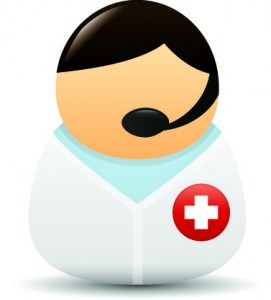Healthcare with Confidence
Dupuytren’s contracture is a deformation of the hands, which usually develops over many years. This is a problem in the layer of tissue under the palm skin. In this gradually formed tissue components, which ultimately creates a kind of thick scar, which creates tension leads and one or more fingers in the bent position.
As a result, affected the fingers can not be straightened completely, which can complicate daily operations, such as placing hands in his pockets, putting on gloves or shaking hands.
Dupuytren’s contracture is mainly affects the ring finger and little finger, and occurs most often in older men of Northern European descent.
Leading experts in hand therapy and surgery in Israel:
Dr. Lior Paz – Deputy Director of the Department of Surgery of the wrist joint and hand. Beilinson Hospital. Rabin MC.
Dr. Batya Yafe – specialist in plastic surgery arm and hand. Head of the Department of micro-surgery arm and hand in the Sheba Medical Center, Tel Hashomer.
⇒ Best orthopedists of Israel 2022 – Forbes
There are several factors that are believed to increase the risk of the disease, including:
♦ Age. Dupuytren’s contracture occurs most often after the age of 50 years.
♦ Sex. Men are more likely to develop Dupuytren’s and have a more severe contraction than women.
♦ Family history. Dupuytren’s contracture is often a family history.
♦ Smoking and drinking alcohol. Smoking is associated with an increased risk of developing Dupuytren’s contracture, possibly due to microscopic changes in blood vessels caused by smoking. Alcohol consumption also contributes to the development of the disease.
♦ Diabetes. People with diabetes have an increased risk of Dupuytren’s contracture.
Complications
Dupuytren’s contracture may complicate the implementation of certain functions of the hands. Since the thumb and index finger, as a rule, do not suffer, many people have difficulty with writing. But as Dupuytren’s contracture progresses it can lead to restriction of the ability to fully reveal his hand and grasp the large object.
Diagnosis
In most cases, physicians can diagnose Dupuytren contracture according to the hands appearance. But sometimes it takes another diagnosis.
The doctor compares the two hands, and checks for skin roughness on hands. He also presses on the hands and fingers to check nodes or toughened tissue strips.
Doctor also checks to see if the patient can put his hand flat on a table or other flat surface. If the patient is not able to completely flatten the fingers, it may indicate the Dupuytren’s contracture.
Treatment
There is a range of treatments to slow the progression of Dupuytren’s contracture and relieve symptoms.
If the disease progresses slowly and does not cause pain and has little effect on the ability to use his hands for everyday tasks, patient may not need treatment. Instead, the doctor may prescribe to monitor the progression of Dupuytren’s contracture.
The treatment involves the removal or destruction of the scar that pulls the fingers to the palm of the hand. This can be done in several ways. The choice of procedure depends on the severity of symptoms and the presence of other health problems.
♦Needling. With this technique, a needle is used which is inserted under the skin to pierce and tear the scar tissue, which communicates with the finger. Contracture often repeated, but this procedure can be repeated. The main advantages of this technique are that there is no incision and the procedure can be performed on multiple fingers, and at the same time, as a rule, does not require a large amount of physical therapy later. The main drawback is that it can not be used in some places on the finger, which can cause damage to a nerve or tendon.
♦ Enzyme injections. Injecting the enzyme into a tight scar palm can soften and weaken it, allowing the doctor later manipulated by hand in an attempt to break the scar and straighten the fingers. Advantages and disadvantages of the introduction of an enzyme similar to a puncture, but the injection of the enzyme may be more painful initially.
♦ Surgery. Another option for people with advanced disease and limited function of progressive disease is surgical removal of the tissue affected by the disease. The main advantage of surgery is that it leads to a more complete release than that provided puncture or enzymatic method. The main drawbacks are the physical therapy as a consequence of the operation, and recovery may take longer.
In some severe cases, especially if you do not fix the problem by surgery, the surgeon will have to remove all the tissue affected by Dupuytren’s contracture, including the attached skin. In these cases, a skin graft should be used to cover an open wound. This operation is the most invasive and has the one long recovery time.



